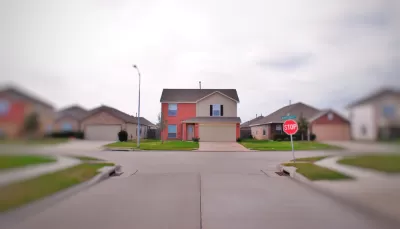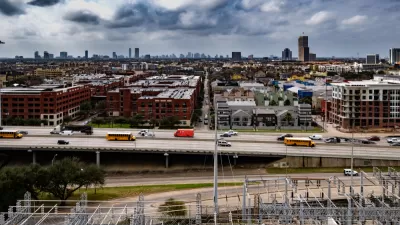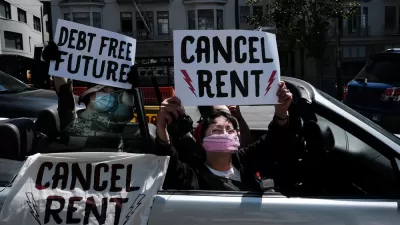Overcrowding and housing insecurity among Black and Brown communities led to disproportionately high COVID-19 fatalities, research shows.

Data from the Kinder Institute for Urban Research's 2021 State of Housing report "suggest a reason for the racial/ethnic differences in who COVID-19 killed," reports Stephen Averill Sherman. That reason: overcrowded housing. "[A]s scientists built knowledge of COVID-19’s spread, they learned that one needed more than a quick on-the-sidewalk encounter with an infected person to catch the disease. One needed to spend extended periods of time indoors with someone harboring the virus."
According to research from New York University's Furman Center, "it wasn’t necessarily population density but housing crowding that accelerated the virus’s contagion." Housing insecurity exacerbated by the pandemic increased overcrowding at the worst possible time. "[I]n Harris County, Hispanic-headed households are about 10 times more likely to be overcrowded than white non-Hispanic-headed households (10.9% vs. 1.2%). Black- and Asian-headed households are in the middle (4.3% and 4.9%, respectively). Hispanic Houstonians were also the ethnic/racial group with the most outsized death share from COVID-19."
Additionally,
[t]he types of jobs with high COVID-19 fatalities—construction, food preparation, health care support—are often done by Black and Brown Houstonians. The most recent ACS data show that working-age Black Harris County residents fill 48% of health care support positions despite being 20% of the population. Per 2018 Census department data quoted in a Houston Chronicle story, Hispanic Harris County residents represent 50% of its food service workers and 81% of its construction workers.
Sherman argues that the disproportionate rate of COVID-19 deaths in Houston's low-income households could have been reduced by more effective use of resources such as expanded unemployment benefits, more robust rental assistance, and hotel rooms where those diagnosed with COVID-19 could safely quarantine. "[O]ne lesson learned," Sherman writes, "is that while we share a lot of air with our coworkers and housemates, we are not all in this together."
FULL STORY: Houston had an overcrowding problem at precisely the wrong time: during a pandemic

Study: Maui’s Plan to Convert Vacation Rentals to Long-Term Housing Could Cause Nearly $1 Billion Economic Loss
The plan would reduce visitor accommodation by 25,% resulting in 1,900 jobs lost.

Alabama: Trump Terminates Settlements for Black Communities Harmed By Raw Sewage
Trump deemed the landmark civil rights agreement “illegal DEI and environmental justice policy.”

North Texas Transit Leaders Tout Benefits of TOD for Growing Region
At a summit focused on transit-oriented development, policymakers discussed how North Texas’ expanded light rail system can serve as a tool for economic growth.

Nevada Bills Aim to Establish Home Insurance Assurance Amidst Wildfire Risk
Republican sponsor hopes the FAIR plan would be “a true market of last resort.”

Virginia Law Allows Judges to Mandate Speed Limiters
The law could set a new precedent for speed limiting tech on U.S. vehicles.

Comment: EPA Cuts will Send Atlanta Back to Eye-burning Ozone, Lung-damaging Smog, and Raw Sewage in the Chattahoochee River
A veteran political journalist takes stock of the hard-earned ground Georgia stands to lose with slashed environmental protection.
Urban Design for Planners 1: Software Tools
This six-course series explores essential urban design concepts using open source software and equips planners with the tools they need to participate fully in the urban design process.
Planning for Universal Design
Learn the tools for implementing Universal Design in planning regulations.
City of Santa Clarita
Ascent Environmental
Institute for Housing and Urban Development Studies (IHS)
City of Grandview
Harvard GSD Executive Education
Toledo-Lucas County Plan Commissions
Salt Lake City
NYU Wagner Graduate School of Public Service





























